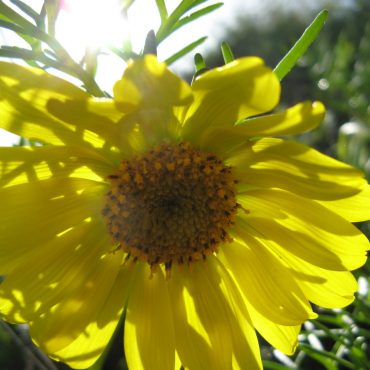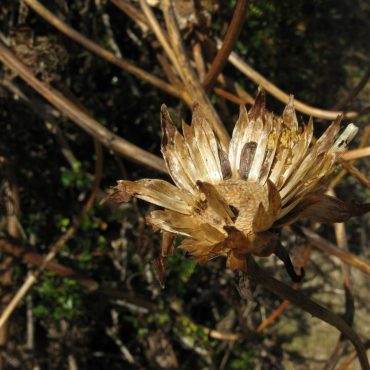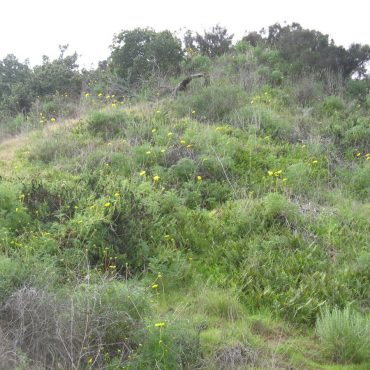Sea dahlia (Leptosyne maritima) is one of our loveliest spring-blooming perennials. Clear yellow daisy-like flowers wave above clumps of bright green, fern-like foliage. By summer both flowers and foliage are gone. Sea dahlias prefer steep sandy slopes near the ocean. Because this habitat is rapidly disappearing due to development, sea dahlia is considered endangered by the California Native Plant Society.
Sea Dahlia
Leptosyne maritima
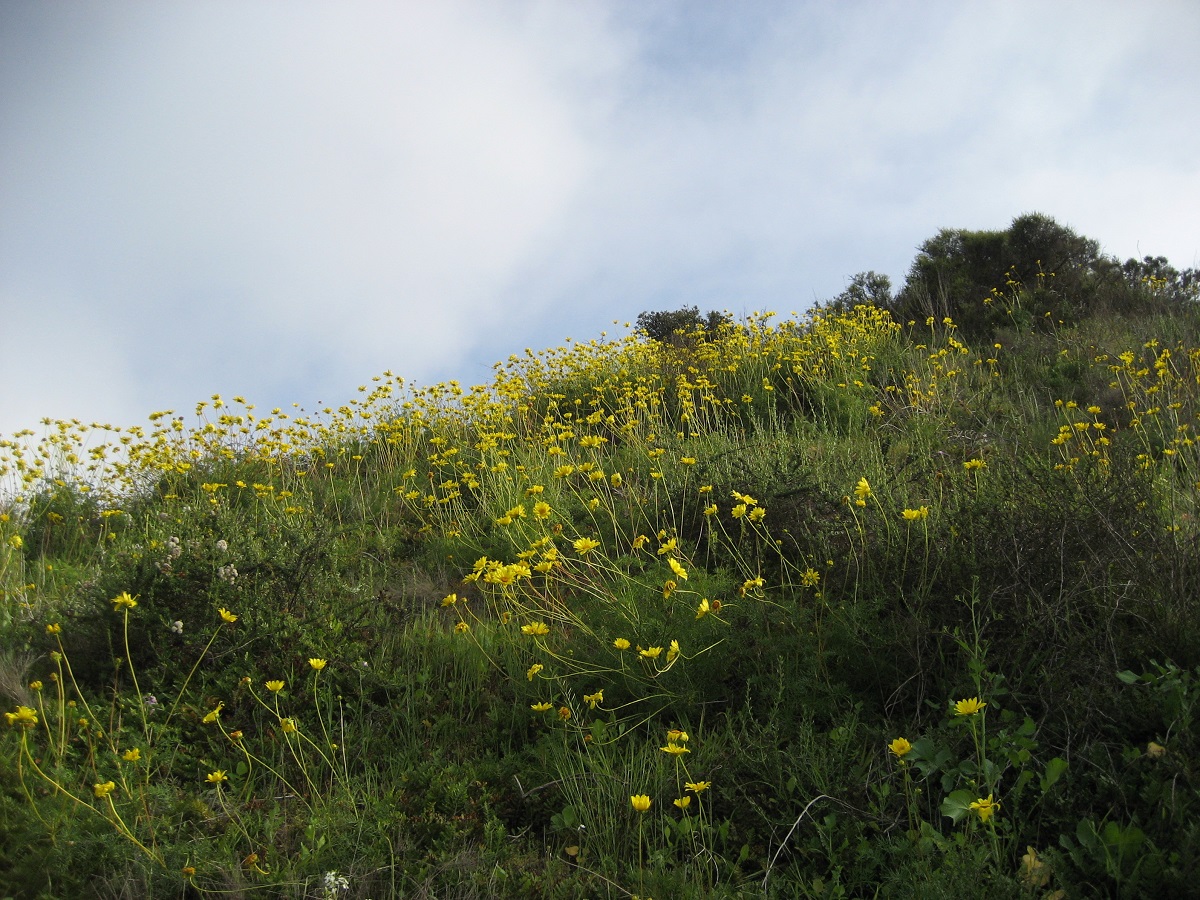
Other Common Names:
Description 2,24
Sea dahlia is a perennial herb, usually less than 3 feet (1 m) high, growing from a fleshy taproot.
Basal clumps of leaves are 1-2 feet (30-60 cm) high. Leaves are bright green, fern-like, pinnately divided 1-3 times into fleshy, linear segments. Sea dahlia dies back during the summer. Bright yellow daisy-like flower heads appear primarily February – June1 and consist of both disk florets and ray florets. They are carried singly on long, hollow stems, extending up to 2 feet (60 cm) above the foliage. Flower heads resemble those of bush sunflower (Encelia californica). Both have yellow ray florets. They can be distinguished by the color of the disk florets in the daisy “eye”. Disk florets of sea dahlia are yellow, those of bush sunflower are brown.
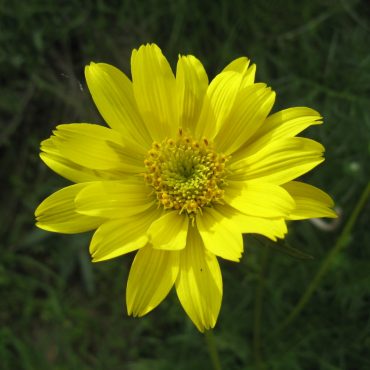
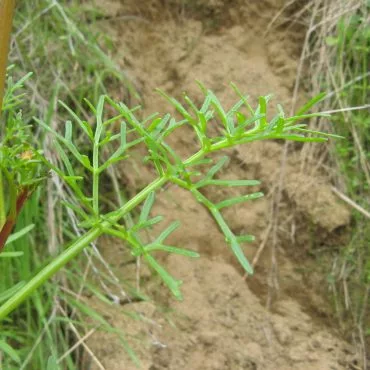
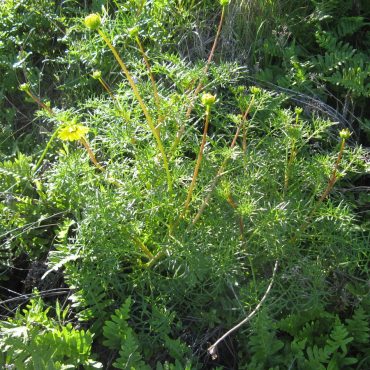
Distribution
Sea dahlia is native to a small area in southern California and northern Baja California, Mexico. It is restricted to coastal regions below 400 feet (120 m) where it prefers sandy cliffs and slopes near the ocean.7,8,19 Because its natural habitat is eroding from the west and development is encroaching from the east, sea dahlia is declining locally. It is considered endangered by the California Native Plant Society.19
In the Reserve, sea dahlia may be seen in the spring in the hills above the trail in Central Basin. It is close to the trail for easy viewing at the broad valley that opens between Holmwood and Annie’s Canyon Trail. Recently, it has been planted in several revegetation sites in other areas of the Reserve.
Learn more about plant vegetation types here
Classification
Sea dahlia is a dicot angiosperm in the sunflower family, Asteraceae.2,11 This is the largest family of vascular plants in the Northern Hemisphere.143 “Flowers” of Asteraceae are made up of one or both of two types of flowers (florets): symmetrical disk florets and strapped-shaped ray florets. These are crowded onto a common base (receptacle) and are often assumed to be a single flower, which is called a flower head.44,49
Other familiar Asteraceae that occur in the Reserve include California sagebrush (Artemisia californica), bush sunflower (Encelia californica), and goldenbush (Isocoma menziesii).48
The genus Leptosyne was previously considered to be a section within the genus Coriopsis.
The genus Leptosyne has only eight other members in California, of which the best known may be the giant coreopsis, L. gigantea.24 A stand of giant coreopsis has naturalized along the bank of Interstate 5 between Solana Beach and Cardiff by the Sea, and two plants have been found in the Reserve near the Solana Hills trailhead.
Alternate Scientific Names:
Coriopsis maritima
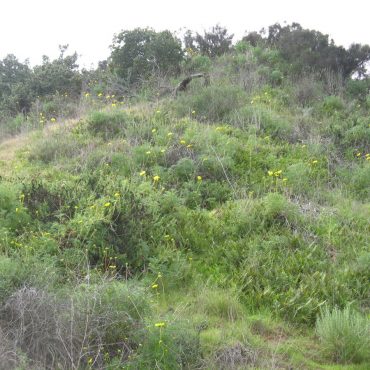
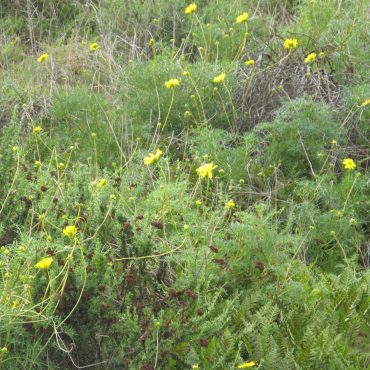
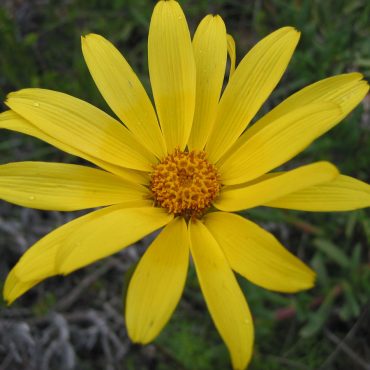
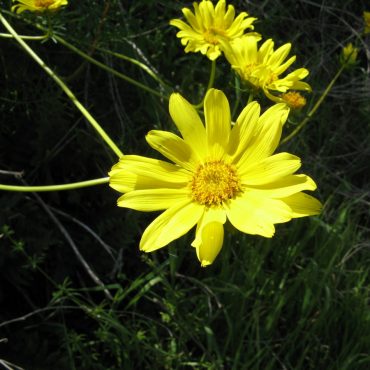
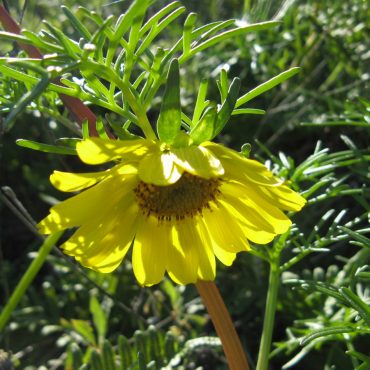

Human Uses
The Kumeyaay boiled the tap root and used the tea for stomach aches.16

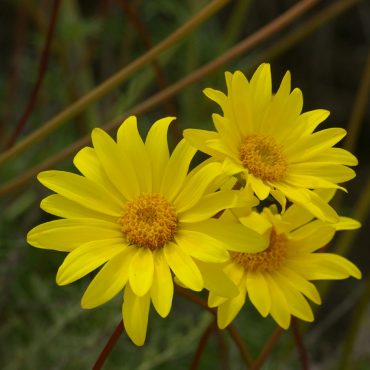
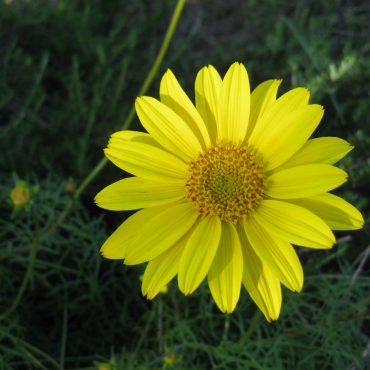
Interesting Facts
The genus name, Leptosyne, comes from the Greek leptos, meaning slender or weak.21 Presumably, this refers to the long, slender flower stem.
